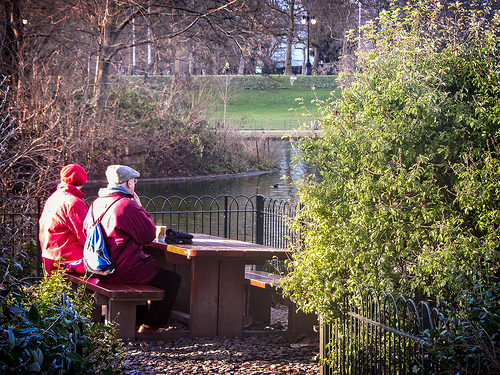Many seniors prefer to stay at home as long as possible, rather than move into an assisted living residence. After years of independence and working to build a home, they naturally want to stay there as long as possible. Many seniors feel safe and comfortable in their own home because they are surrounded with their own things and furniture as well as cherished memories.
In addition to that, staying at home is cheaper than moving into a retirement home. Economically, most seniors have the mortgage on their homes paid-in-full , whereas if seniors choose to move into a retirement home or assisted living residence they will pay for their room, utilities and other services such as bathing, dressing, grooming, basic housekeeping, meal preparation, transportation, and health care services.
Although falls are the main cause of injury for seniors, there are steps that you can take to create an accident-free home so that seniors feel more comfortable, safer, relaxed and independent within their home. Make the following small adjustments to help prevent injuries:
1. Remove items out of Walking Paths within the Home to Prevent Injury
Items such as furniture, electrical cords, newspapers or paper, pet bowls and etc. can cause seniors to slip, trip and fall easily. The senses of sight, hearing, touch and reaction time is much slower in a senior adult than in someone younger, obviously. By removing items out of walkway paths, falls can be prevented.
2. Secure Carpets, Linoleum, and Rugs Securely to the Floor
If using throw rugs, purchase non-slip rugs with a rubber underlay that will prevent slipping. In addition, remove or adjust thresholds to prevent tripping and falling.
3. Avoid Applying wax to Hardwood Floors and Linoleum
Wax will make floors slippery, especially if walking in socks or non-skid shoes.
4. Purchase at a Local Hardware Store, Non-slip Strips or Rubber Mats
Place them on stairs, bathtubs and showers to prevent falls.
5.Clean up Spills on Floors
To prevent slipping on wet surfaces.
6. Reduce Poor Lighting by Installing High Wattage Light Bulbs inside and outside of the Home
Make sure dark passageways, stairways, hallways, porches, and balconies are well-lit. During the day, open curtains and blinds to provide more light into the home.
7. Install Handrails
Do it on both sides of stairs, porches, and balconies. Always hold onto the handrail, especially if you are holding an item while walking up or down stairs.
8. Install Grab Bars Securely to Walls in areas that have a Tub or a Shower
Always hold onto the grab bars when entering and exiting the tub and shower. Place items such as shampoo bottles within easy reach that requires no bending or stretching. Consider installing shower benches to sit on while bathing. Always place a non-slip mat in the shower/tub and a non-slip rug on the bathroom floor to prevent slipping on wet surfaces. In addition, install grab bars next to the toilet and get an elevated toilet seat to get up and down more easily.
9. Rearrange often-used items by placing them on a Reachable Shelf
This is so that you avoid using stepping stools. Items such as food, culinary treats, cleaning products should be within easy reach. Place labeled medicines on a counter and out of reach of children instead of placing medicine in a hard to reach medicine cabinet. If using a medicine cabinet, make sure to lower it on the wall for easy access.
10. Rearrange Clothing in Bedroom Closets to make these items easily Accessible for Seniors
Avoid placing items on high shelves that require using stools.
11. Set the Thermostat of the Water Heater 120 Degrees Fahrenheit or Lower
To prevent scalding during washing dishes or taking baths.
12. Change the Batteries in all Smoke Alarms often to Alert you to possible Fires
In addition to that, also make sure to have an emergency escape route planned in case of fire.
13. Keep a Flashlight and Telephone within reach of your Bed at Night in case of an Emergency
If disaster strikes and you need to react quickly, then having these two things handy could mean the difference between life and death.
14. Post Emergency Numbers Next to Every Telephone in your House
Also save emergency numbers in a cell phone that you keep with you at all times.
By following these safety prevention tips, a lot of serious injuries can be avoided. We over at Meadowbrook Point retirement community have implemented all of these when building our homes. After implementing all or some of these in your home, make sure that you ask a family member or health care professional to assess your home’s safety and seek advice to make sure that everything’s properly setup.
Featured images:
- License: Creative Commons image source
Alissa Young is a community manager at Meadowbrook Pointe where she spends a lot of time making sure that everyone is safe and secure in their homes. Being a part-time writer, she also likes to share with the world her writings so that others can benefit from her experience.
